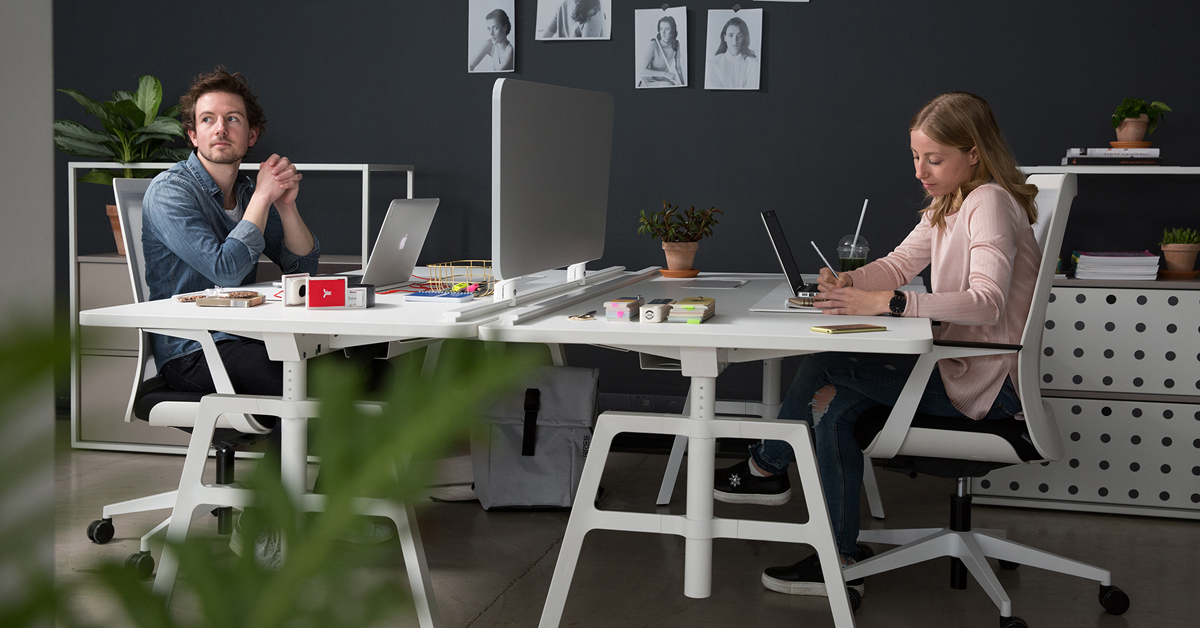Physical distancing and remote working as part of future office space planning.
By Franz Gurtner, 12.05.2020

Heading along the road towards normality in the working world not only involves overcoming (short-term) health policy hurdles, but also rethinking sustainable developments. Remote working, i.e. not being bound to a specific work location, has a special role to play in this context and is becoming an integral part of this new approach to working.
For the moment, let’s focus on the short-term adjustments to office buildings that the corona crisis has made necessary. Office premises are planned for the long term. No company is going to undertake major construction measures because of the crisis. However, organisational and spatial measures, which can be swiftly implemented, do play a major role in minimising the potential for spreading the viral infection. Bernhard Kern, Managing Director of the office consulting company Roomware, identifies the following approaches: “It’s all about offices, communication rooms and relaxation zones simply accommodating fewer people. It’s also necessary to ensure mobile room dividers and desk screens keep staff at a safe distance from each other and provide protection if they sneeze or cough”. Lightweight acrylic glass screens are preferred here as they are easy to clean and disinfect while preserving the transparency of the room at the same time.
People will refrain from travelling hundreds of kilometres for brief appointments, and instead rely more on online meetings or webinars.
Modern online tools complement the remote work.
Fewer people in one place works mainly in connection with remote working – mostly from the home office. Many companies are now resorting to cloud services and creating VPN access for their employees to the company network. New collaboration and conferencing tools such as Teams, Slack or Zoom make cross-location communication much easier and represent more than just a test run for future working models.” Although home office or remote work will stabilise over time at a lower level than now (in the middle of the health crisis), it will gain in importance in the long term. I see the greatest impact in terms of business travel; people will refrain from travelling hundreds of kilometres for brief appointments, and instead rely more on online meetings or webinars. This will not only increase efficiency, but will also have positive ecological effects,” says Bernhard Kern, assessing the development. He also assumes that the increased level of remote working will cause office space to shrink by 5 – 10% in the longer term.
Increased remote collaboration and communication also requires an adjustment to the space available in companies. In larger open-space offices, in particular, web meetings can lead to considerable noise pollution despite the use of headsets. Depending on the intended use – from desktop meetings to larger group meetings – companies should therefore provide rooms and technology that enable remote participants to be integrated seamlessly and without any hassle.




